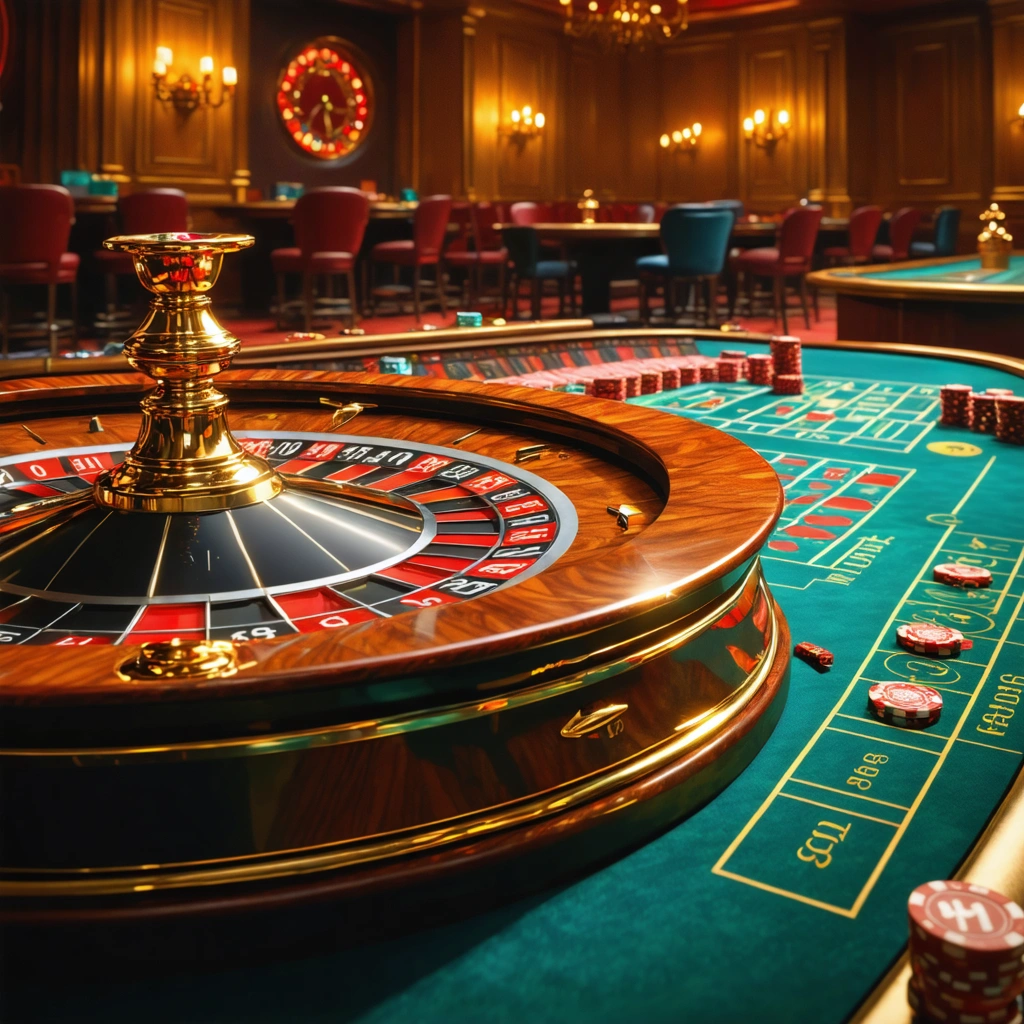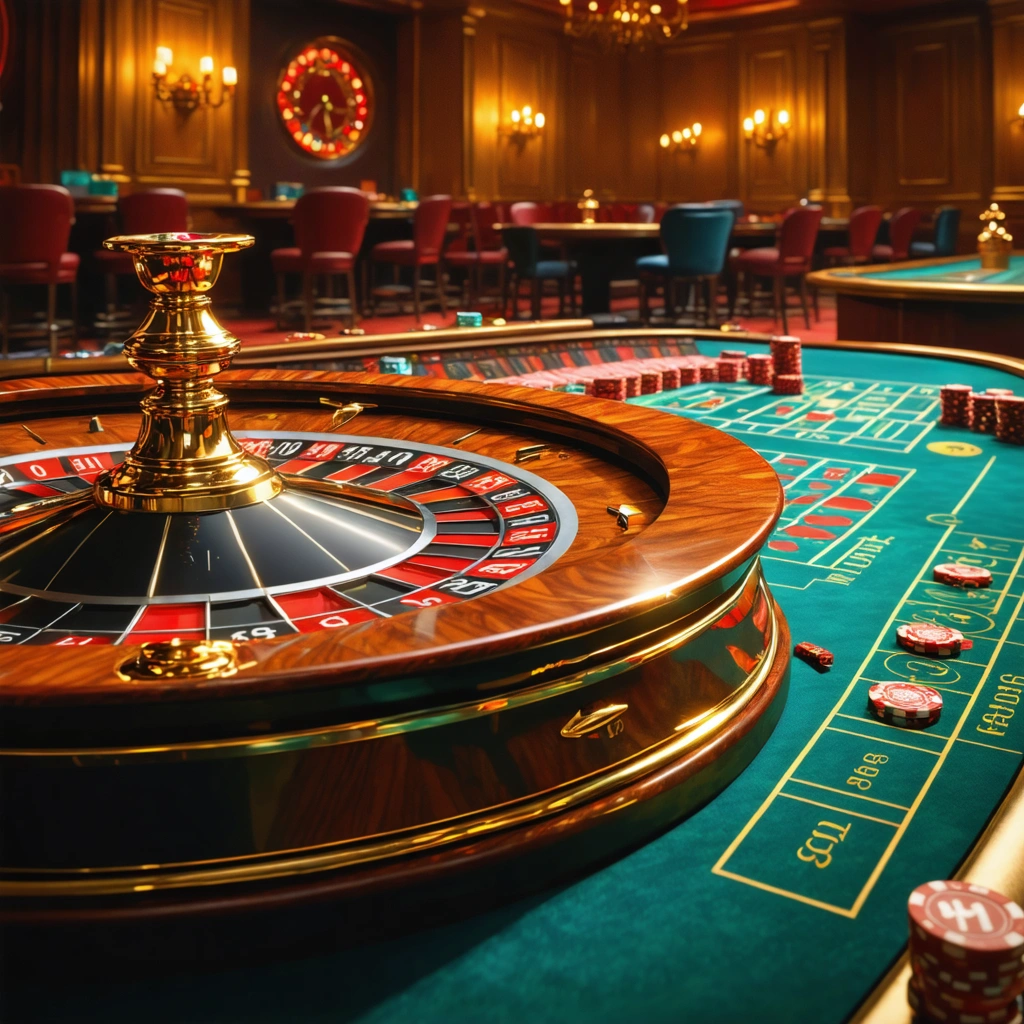
Unlocking the Mystery Behind Red Door Roulette’s Bonus Rounds
Imagine sitting at a roulette table, the wheel spinning with hypnotic precision, the ball bouncing unpredictably—then suddenly, you hit that elusive red door bonus round. For many players, this moment is the pinnacle of excitement, a chance to amplify their winnings dramatically. But how often does this actually happen? What are the true red door bonus odds? And how do the roulette bonus mechanics influence your chances? These questions linger, casting a shadow over the thrill with a cloud of uncertainty.
Live roulette statistics often give players a general sense of the game’s fairness and randomness, yet the bonus rounds—those flashy, heart-racing moments—are shrouded in mystery. It’s easy to get swept up in the allure of bonus rounds without fully appreciating the underlying numbers that govern their occurrence and payout potential. Are these rounds genuinely the golden tickets they seem, or do the statistics tell a different story?
Why Understanding Bonus Round Stats Matters More Than Ever
Here’s the catch: many roulette enthusiasts jump into games like red door roulette with high hopes, lured by the promise of bonus rounds that can multiply their stakes. But without a solid grasp of the statistical landscape, players risk falling into traps of false expectations. The red door bonus odds are not just abstract figures—they’re the backbone of informed decision-making.
Consider this: if you knew the exact probabilities and payout structures behind each bonus round, you could tailor your betting strategy to maximize enjoyment and minimize losses. Conversely, ignorance can lead to frustration, chasing elusive wins that the numbers suggest are rare. The roulette bonus mechanics—how the game triggers bonus rounds, what conditions apply, and how payouts are calculated—are critical pieces of the puzzle. Without understanding these, every spin might feel like a shot in the dark.
And it’s not just casual players who benefit from this knowledge. Game developers, casino operators, and statisticians all pore over live roulette statistics and bonus round data to tweak gameplay, ensure fairness, and maintain player engagement. So, whether you’re a seasoned gambler or a curious newcomer, diving into the statistical analysis of red door roulette bonus rounds equips you with insights often hidden beneath the surface glitter.
What This Article Will Reveal
In the sections ahead, we’ll peel back the layers on red door roulette’s bonus rounds with a clear and structured approach. You’ll discover:
- How red door bonus odds are calculated and what they mean for your gameplay
- An in-depth look at roulette bonus mechanics, including common triggers and payout structures
- Insights drawn from live roulette statistics that reveal patterns and probabilities in real-world play
- Practical tips on how to interpret and leverage bonus round data for smarter betting
By the time you finish reading, you’ll be armed with a sharper understanding of the statistical forces at play behind the thrill of the red door bonus. This isn’t just about numbers—it’s about transforming your experience into one where excitement meets clarity, where every spin is backed by knowledge.
So, are you ready to step through the red door and explore the fascinating intersection of chance, strategy, and statistical insight? Let’s spin the wheel and get started.

Red Door Roulette: Statistical Analysis of Bonus Rounds
What Are the Red Door Bonus Odds in Red Door Roulette?
The red door bonus odds in Red Door Roulette play a crucial role in determining the potential profitability and excitement of the game. These odds represent the probability of triggering a bonus round when the ball lands on specific sections associated with the red door feature. Unlike traditional roulette where the focus is primarily on number bets, Red Door Roulette integrates unique mechanics that introduce bonus rounds, thereby adding layers of complexity and opportunity.
From a statistical perspective, understanding these odds requires analyzing the wheel layout and the frequency of bonus-triggering segments. Industry data suggests that the red door bonus odds are typically calibrated to balance the house edge with player engagement. For example, if the wheel has a total of 38 slots like American Roulette, and 4 of these slots trigger the red door bonus, the raw probability would be approximately 10.5%. However, this can vary depending on the game variant and the precise roulette bonus mechanics implemented by the provider.
Why does this matter? Knowing the red door bonus odds helps players make informed decisions on their bets, especially when deciding how much to wager on bonus-triggering segments versus standard number bets. It also enables statisticians and game designers to fine-tune the experience to ensure fairness and excitement.
How Do Roulette Bonus Mechanics Work in Red Door Roulette?
Roulette bonus mechanics in Red Door Roulette are designed to enhance the traditional game by incorporating special features that activate under certain conditions. These mechanics usually involve additional rounds or mini-games that offer players the chance to win extra payouts or multipliers beyond the standard roulette outcomes.
Typically, the mechanics operate as follows:
- Triggering the Bonus Round: The bonus round is triggered when the ball lands on a designated red door segment or symbol on the wheel.
- Bonus Round Gameplay: During the bonus, players might encounter a variety of challenges such as spinning a separate bonus wheel, selecting doors or boxes for prizes, or playing a timed mini-game that can multiply their winnings.
- Outcome and Payouts: The results of the bonus round determine additional payouts, which can significantly increase the total win for that spin.
Understanding the roulette bonus mechanics is essential because it impacts the game's volatility and expected return. Games with frequent but smaller bonuses tend to have lower variance, while those with rare but large bonuses introduce higher variance. Players who enjoy risk may prefer the latter, but it’s important to grasp how these mechanics influence overall game dynamics.
What Do Live Roulette Statistics Reveal About Red Door Roulette Bonus Rounds?
Live roulette statistics provide an empirical foundation for analyzing the performance and fairness of Red Door Roulette bonus rounds. By examining thousands of spins in real-time or from historical data, analysts can measure the frequency of bonus triggers, average payout sizes, and the distribution of wins versus losses.
Key insights from live roulette statistics include:
- Trigger Frequency: How often the red door bonus activates relative to total spins. This confirms whether the bonus odds advertised align with actual gameplay.
- Average Bonus Payout: The mean value of winnings from bonus rounds, which helps assess the bonus's contribution to overall return-to-player (RTP).
- Win Distribution: Analysis of how wins are spread out among players, indicating if the bonus rounds favor consistent small wins or occasional large jackpots.
For example, a case study of a popular Red Door Roulette variant showed that the bonus round was triggered approximately once every 9 spins, slightly better than the theoretical odds, which increased player engagement. Furthermore, the average bonus payout accounted for roughly 15% of total player returns, underscoring its significance in overall game profitability.
Why Is Statistical Analysis of Bonus Rounds Important for Players and Casinos?
Statistical analysis of bonus rounds like those in Red Door Roulette serves multiple purposes:
- For Players: Understanding the statistical likelihood of bonuses and their expected payouts empowers players to develop better betting strategies and manage their bankroll more effectively.
- For Casinos: It helps maintain game integrity and balance by ensuring the bonus features neither skew too heavily in favor of the house nor the player, which could affect long-term profitability and regulatory compliance.
- For Game Developers: Deep analysis informs design choices, allowing them to create engaging bonus rounds that sustain player interest while maintaining fair odds.
In conclusion, the intersection of red door bonus odds, roulette bonus mechanics, and live roulette statistics provides a comprehensive framework for evaluating Red Door Roulette’s bonus rounds. Whether you're a player seeking to maximize your chances or a casino aiming to offer a compelling yet fair game, understanding these elements is key to decoding the complexities behind this innovative roulette variant.


